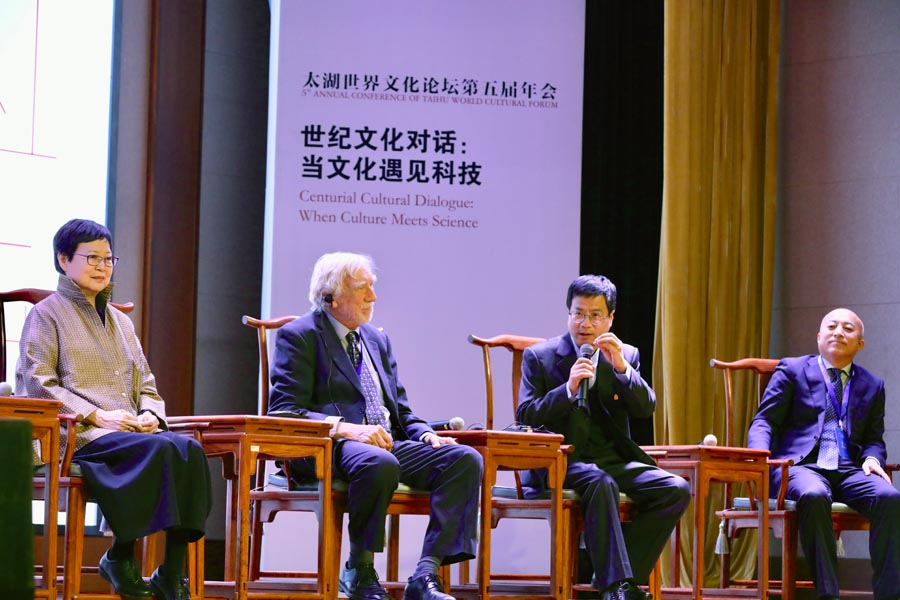 |
|
Ming-Chu Feng (1st from left) and Feng Nai'en (2nd from right) attend the forum in Beijing on Oct 19, 2018. [Photo by Zhu Xingxin/China Daily] |
Feng Nai'en, deputy director of the Palace Museum:
Digital technology helps spread of traditional culture
"The Palace Museum offers various applications (for downloads), helping the traditional culture spread more widely and become more integrated into people's lives."
He cited a digital version of the Palace Museum as an example, an app that allows internet users to build a fully customized royal home online. People can decorate their virtual homes with artworks they like, even if they're rarely seen classical paintings in real life. For instance, Along the River During the Qingming Festival - one of China's most-celebrated ancient paintings from the 12th century.
Technology is also beneficial for cultural relic restorations, Feng said. "The combination of technology and traditional craftsmanship can not only solve problems such as the formula ratio. Through long-time experiences, it could also build a database which will provide more possibilities for digital repairing. For example, the participation of AI."
Ming-Chu Feng, former director of the Taipei Palace Museum:
Digital technology helps build museums without walls
"The most important project that the Taipei Palace Museum now is working on is building open data, which is expected to contain 700,000 cultural relics. It offers easy access to online reading."
"Driven by digital technology, the Taipei Palace Museum has developed an online education channel which spreads traditional Chinese arts and culture to the most remote areas…Traditional museum has become a museum without walls."